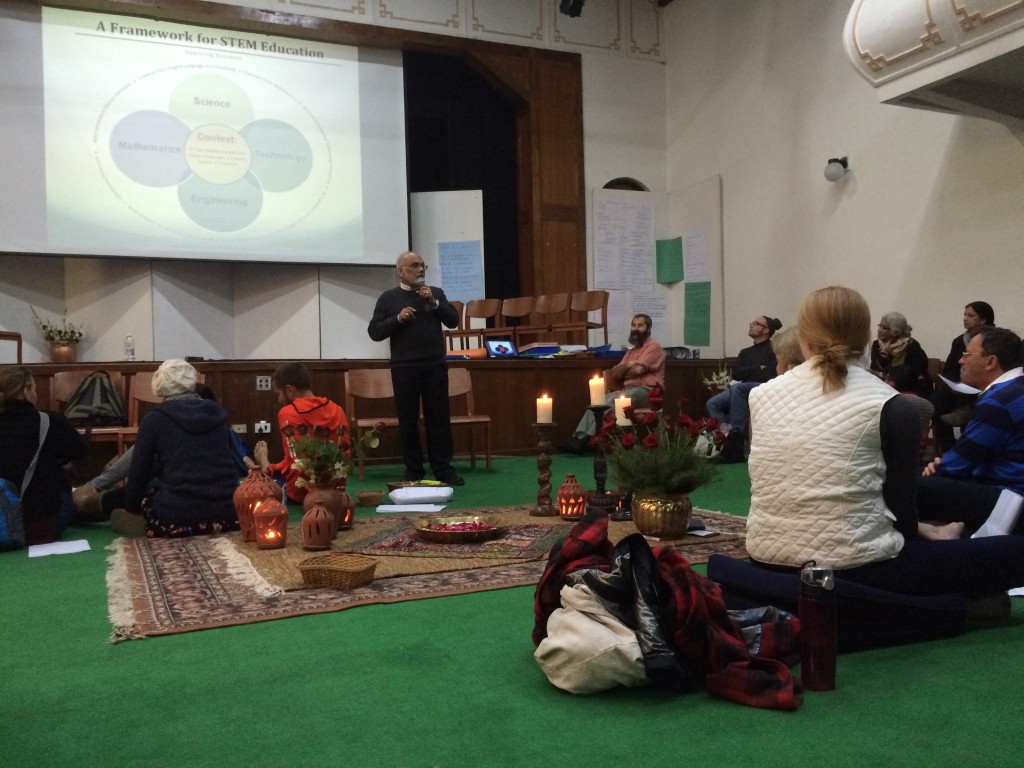A small school in the foothill town of Mussoorie, Uttarakhand, India has more in common with Flagstaff than one would think, thanks to Pradeep “Max” Dass, director of the NAU Center for Science Teaching and Learning.
A few short weeks ago, Dass traveled—for the second time—to Mussoorie, home to his teaching alma mater, Woodstock School. He is helping guide the oldest international school in Asia to take steps to strengthen its science, technology, engineering and math education programs.
“I was fortunate enough to teach science at Woodstock from 1983 to 1993, and it was there I received a sabbatical to pursue my master’s degree in science education in the U.S., which ultimately led me to NAU,” Dass said. “Naturally, when I was asked to help, I jumped at the chance to give back to the school that helped shape my life and career.”
Woodstock School, a K-12 residential school founded in 1854 and comprised of about 450 international students, is known mostly for its arts and music program.
“I have to thank my wife and a former Woodstock student of mine for sharing an article about CSTL on Facebook which ultimately led to this emerging partnership,” Dass said. “Last November, I traveled to the school to learn more about their needs and develop a strategy for infusing STEM-oriented education into their curriculum.”
After completing a needs assessment during his first trip, Dass returned in February to lead several educational workshops during Woodstock’s staff retreat, as well as make three recommendations for ways to promote and implement STEM education using cutting edge theories and practices. The response to Dass’ involvement has been very positive.

“Strength and depth are two words which immediately come to mind when I reflect on Max’s work with us,” said principal Jonathan Long. “Strength rooted in his experience as a former staff member and depth based on the caliber of his professional expertise. Whether in one-to-one settings or in facilitating all-staff workshops, Max has gently moved important conversations forward. I am delighted with this developing partnership.”
Long believes nothing could be more important for the vision and vitality of a dynamic international school environment than the key themes emerging around educational philosophy, professional development and capacity building. He is in agreement with the strategic plan outlined for next steps.
Dass recommended Woodstock teachers, who are born and raised in India and spend their entire careers there, make a month-long trek to NAU. While in Flagstaff, educators from India would take part in NAU science teacher education classes as well as immerse themselves in Flagstaff public school classrooms to learn how STEM education is being implemented. Upon returning to India, Woodstock staff would be able to incorporate these experiences in their own classrooms.
In addition, Dass encouraged one-year sabbaticals for Woodstock science teachers to enroll in NAU’s master of science teaching program and suggested sending NAU student teachers for an international teaching experience on the Woodstock campus.
“At CSTL, our mission and vision includes providing international leadership in STEM education,” Dass said. “We are very excited to be creating a partnership that is not only beneficial for Woodstock, but for NAU students and staff. Developing curriculum that drives STEM is an important education initiative for all schools looking to be 21st century leaders.”



